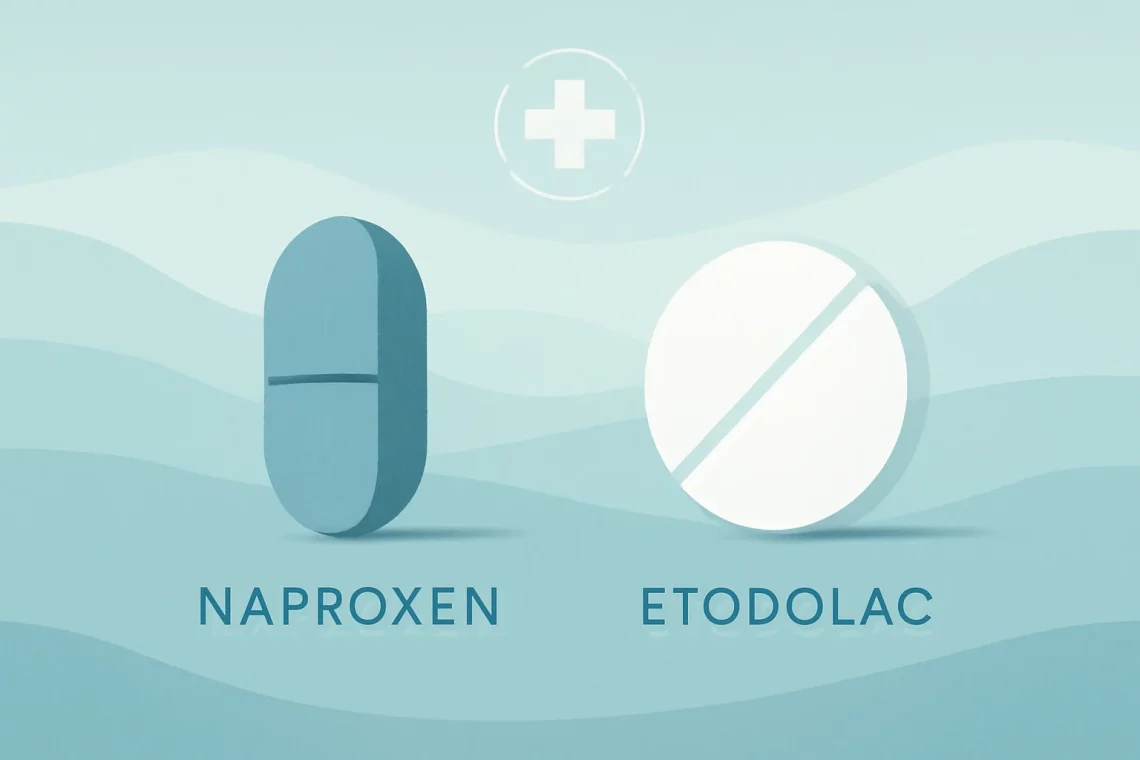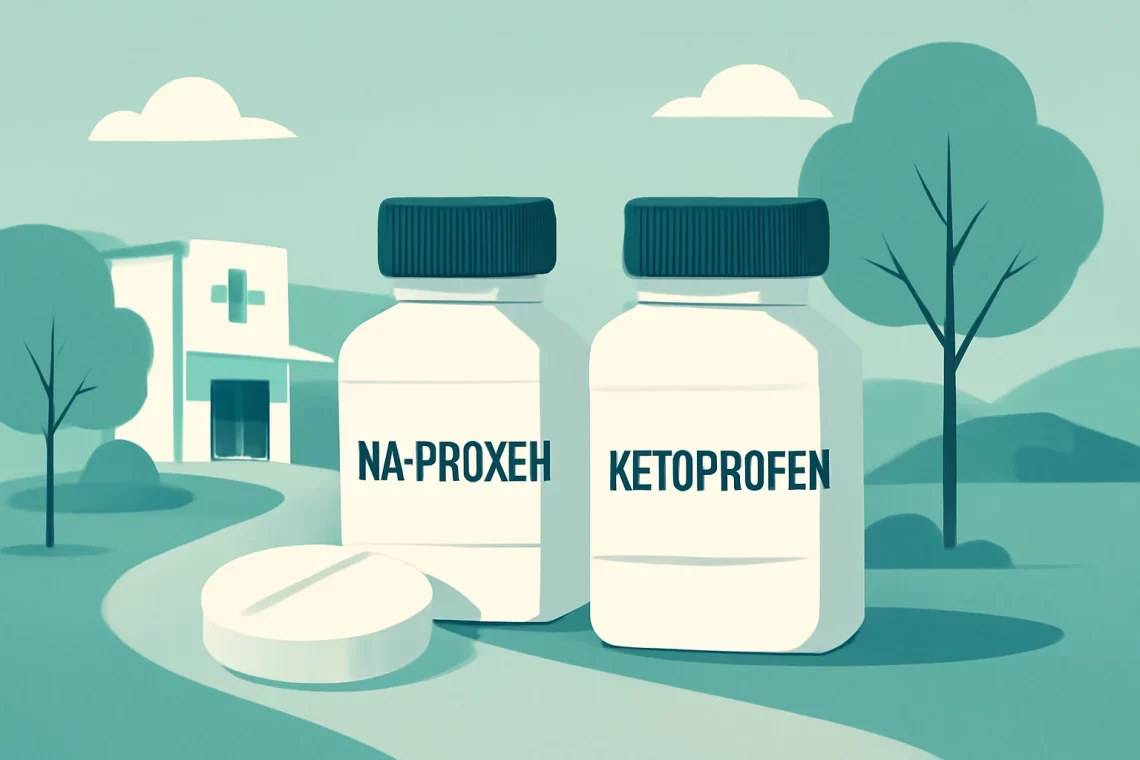-
Meloxicam vs Ibuprofen: Which Pain Reliever Is Right for You?
In the realm of pain relief and inflammation management, Meloxicam and Ibuprofen are two commonly used nonsteroidal anti-inflammatory drugs (NSAIDs) that serve as effective options for many individuals. Both medications are prevalent in treating various conditions, including arthritis, muscle pain, and other inflammatory disorders. While they share similarities in their mechanisms of action, their differences can significantly influence their suitability for different patients and conditions. Understanding these distinctions is crucial for making informed decisions about pain management and overall health. Meloxicam, often prescribed for chronic inflammatory conditions, is known for its long half-life, allowing for once-daily dosing. On the other hand, Ibuprofen is a familiar over-the-counter option that is widely…
-
Diclofenac vs Meloxicam: Which Pain Reliever Is Right for You?
Diclofenac and meloxicam are two commonly used non-steroidal anti-inflammatory drugs (NSAIDs) that play a significant role in managing pain and inflammation. These medications are often prescribed for conditions such as arthritis, muscle pain, and various forms of acute pain. While both diclofenac and meloxicam share similar mechanisms of action—primarily inhibiting cyclooxygenase enzymes to reduce the production of prostaglandins—they differ in various aspects, including their pharmacokinetics, usage, and side effects. Choosing between these two medications can be challenging, especially for patients who are looking for effective pain relief without compromising their health. Understanding the distinctions and similarities can empower patients and healthcare providers to make informed decisions tailored to individual needs.…
-
Naproxen vs Etodolac: Which Pain Reliever Is Right for You?
Naproxen and etodolac are both nonsteroidal anti-inflammatory drugs (NSAIDs) that are commonly used to manage pain and inflammation. As part of a broader category of medications, they are often recommended for a variety of conditions, including arthritis, menstrual cramps, and other musculoskeletal disorders. While both medications aim to alleviate discomfort and reduce inflammation, they possess distinct properties and mechanisms of action that may make one more suitable than the other depending on the patient’s specific needs. Understanding the differences between naproxen and etodolac is essential for both patients and healthcare providers. This knowledge can lead to more informed decisions regarding treatment options, enhancing the overall effectiveness of pain management strategies.…
-
Naproxen vs Mobic: Which Pain Reliever is Right for You?
Naproxen and Mobic are two widely used nonsteroidal anti-inflammatory drugs (NSAIDs) that serve to alleviate pain and reduce inflammation. While both medications are effective in managing various forms of pain, such as arthritis, menstrual cramps, and muscle aches, they have distinct characteristics and mechanisms of action. Understanding these differences can help patients make informed decisions about their treatment options. The choice between Naproxen and Mobic may depend on several factors, including the specific condition being treated, the patient’s medical history, and the potential side effects associated with each medication. As with any medication, it is crucial to weigh the benefits against the risks and consider how each drug fits into…
-
Ibuprofen vs Mobic: Understanding Their Differences and Uses
Ibuprofen and Mobic are two widely used nonsteroidal anti-inflammatory drugs (NSAIDs) that have become staples in the management of pain and inflammation. Both medications serve essential roles in treating various conditions, but they are distinct in their chemical composition, mechanism of action, and specific uses. When considering options for pain management, understanding the differences between these two medications is crucial. Patients often face the dilemma of choosing the right medication based on their symptoms, potential side effects, and individual health conditions. While Ibuprofen has been a household name for decades, known for its effectiveness in alleviating headaches, menstrual cramps, and mild arthritis, Mobic, or meloxicam, has gained popularity for its…
-
Meloxicam vs Relafen: Which Pain Relief Option is Right for You?
Meloxicam and Relafen are two medications often prescribed for the treatment of pain and inflammation associated with various conditions, including arthritis and other musculoskeletal disorders. Both drugs belong to the class of nonsteroidal anti-inflammatory drugs (NSAIDs), which are commonly used to alleviate discomfort and improve quality of life for individuals suffering from chronic pain. While they serve similar purposes, there are distinct differences in their mechanisms of action, effectiveness, side effects, and usage guidelines that can influence a patient’s choice of treatment. Understanding these differences is crucial for both healthcare providers and patients in making informed decisions about pain management. With the rising awareness of the importance of personalized medicine,…
-
Meloxicam vs Motrin: Which Pain Reliever Is Right for You?
Meloxicam and Motrin are both non-steroidal anti-inflammatory drugs (NSAIDs) commonly used to relieve pain and reduce inflammation. While both medications serve similar purposes, they differ in their chemical composition, mechanisms of action, and specific uses. Understanding the distinctions between these two medications can empower patients to make informed decisions about their pain management strategies. Pain is a universal experience, and effective treatment is essential for maintaining quality of life. Whether it arises from chronic conditions like arthritis or acute injuries, finding the right medication can significantly impact how individuals manage their symptoms. Patients often seek alternatives to traditional painkillers due to concerns about side effects and long-term use. As a…
-
Meloxicam vs Celebrex: Choosing the Right Pain Relief Option
When it comes to managing pain and inflammation, choosing the right medication can often feel overwhelming. With a wide array of options available, two popular medications that frequently come up in discussions are Meloxicam and Celebrex. Both belong to a class of drugs known as nonsteroidal anti-inflammatory drugs (NSAIDs), which are commonly prescribed for conditions such as arthritis, pain, and inflammation. Understanding the differences between these two medications is crucial for both healthcare professionals and patients. Each drug has its unique properties, mechanisms of action, side effects, and contraindications, which can significantly impact treatment outcomes. Whether it’s for short-term use after an injury or long-term management of chronic conditions, the…
-
Meloxicam vs Diclofenac: Which Pain Reliever is Right for You?
Meloxicam and diclofenac are both nonsteroidal anti-inflammatory drugs (NSAIDs) that play a significant role in managing pain and inflammation. These medications are frequently prescribed for various conditions, including arthritis, musculoskeletal pain, and post-surgical discomfort. While they share similar properties, their mechanisms of action, efficacy, and side effects can vary considerably. Understanding the differences and similarities between meloxicam and diclofenac can help patients and healthcare providers make informed decisions regarding pain management strategies. As the demand for effective pain relief continues to rise, it becomes crucial to evaluate the options available. Patients often seek alternatives to traditional pain medications due to concerns about side effects, dependency, or effectiveness. Both meloxicam and…
-
Naproxen vs Ketoprofen: Comparing Pain Relief Options for Your Needs
Naproxen and ketoprofen are both nonsteroidal anti-inflammatory drugs (NSAIDs) that are commonly used to relieve pain and reduce inflammation. These medications are widely prescribed and can be found over-the-counter, making them accessible to a large population seeking relief from various conditions. Despite their similarities, naproxen and ketoprofen have distinct characteristics that may make one more suitable than the other depending on the specific needs of the patient. Understanding the pharmacological differences, potential side effects, and appropriate usage of these medications is crucial for both healthcare providers and patients. Inflammation and pain can arise from numerous sources, including arthritis, muscle strains, and other musculoskeletal issues. In these instances, choosing the right…





































